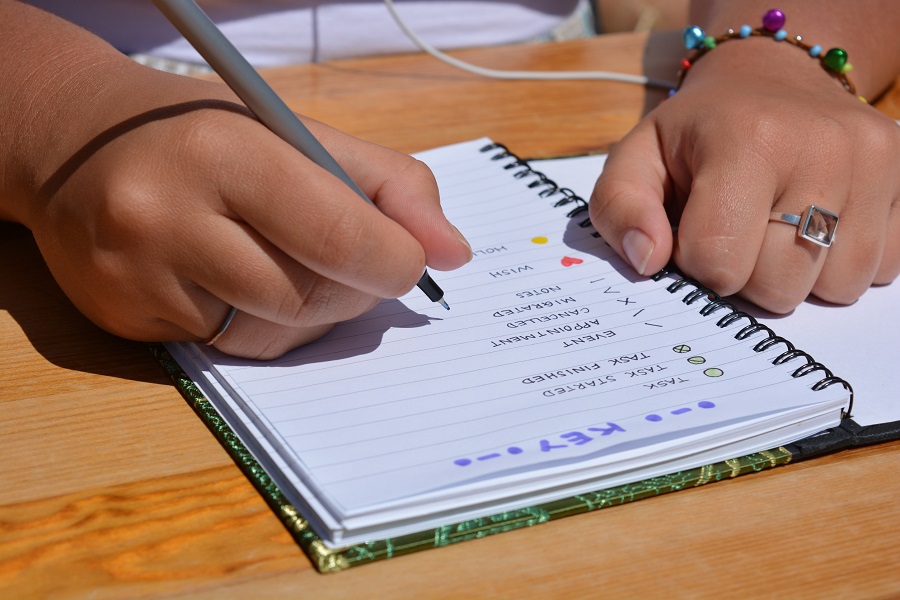 Living alone can offer a sense of independence and peace, but it also comes with the responsibility of ensuring your own safety. Men living alone may not always recognize the signs that they are being stalked, which can put them at risk. Stalking is a serious issue that can lead to significant emotional distress and physical danger. Recognizing the clues early can help you take the necessary steps to protect yourself. Here are 10 clues that you might have a stalker and how to address the situation effectively.
Living alone can offer a sense of independence and peace, but it also comes with the responsibility of ensuring your own safety. Men living alone may not always recognize the signs that they are being stalked, which can put them at risk. Stalking is a serious issue that can lead to significant emotional distress and physical danger. Recognizing the clues early can help you take the necessary steps to protect yourself. Here are 10 clues that you might have a stalker and how to address the situation effectively.
1. Unexplained Appearances
 One of the most obvious signs you have a stalker is noticing someone frequently appearing near your home, workplace, or usual hangouts without a valid reason. If you repeatedly see the same person in different locations where you go regularly, it might not be a coincidence. Stalkers often try to gather information about their targets by observing them from a distance. Keep track of any unusual encounters and note if you see the same individual in multiple places, especially if they seem to have no legitimate reason to be there.
One of the most obvious signs you have a stalker is noticing someone frequently appearing near your home, workplace, or usual hangouts without a valid reason. If you repeatedly see the same person in different locations where you go regularly, it might not be a coincidence. Stalkers often try to gather information about their targets by observing them from a distance. Keep track of any unusual encounters and note if you see the same individual in multiple places, especially if they seem to have no legitimate reason to be there.
2. Unusual Phone Calls or Messages
 Receiving frequent phone calls or messages from unknown numbers can be a red flag that you have a stalker. If these communications contain personal information or seem to track your movements, it’s a strong indication that someone might be monitoring you. Stalkers may use various means to contact their targets, including social media, email, and even anonymous phone calls. If you notice a pattern of unusual communication, it’s crucial to take it seriously and consider blocking the numbers or accounts.
Receiving frequent phone calls or messages from unknown numbers can be a red flag that you have a stalker. If these communications contain personal information or seem to track your movements, it’s a strong indication that someone might be monitoring you. Stalkers may use various means to contact their targets, including social media, email, and even anonymous phone calls. If you notice a pattern of unusual communication, it’s crucial to take it seriously and consider blocking the numbers or accounts.
3. Finding Unfamiliar Items Around Your Property
 Finding unfamiliar items near your home or in places you frequently visit can be a sign you have a stalker. Items like letters, gifts, or even odd objects that seem out of place can indicate that someone is trying to get your attention or send a message. Stalkers often leave objects as a way to intimidate or let you know they are watching. If you discover items that you don’t recognize, it’s essential to document them and consider informing the authorities to establish a record of these incidents.
Finding unfamiliar items near your home or in places you frequently visit can be a sign you have a stalker. Items like letters, gifts, or even odd objects that seem out of place can indicate that someone is trying to get your attention or send a message. Stalkers often leave objects as a way to intimidate or let you know they are watching. If you discover items that you don’t recognize, it’s essential to document them and consider informing the authorities to establish a record of these incidents.
4. Unwanted Social Media Attention
 If you notice that someone is excessively engaging with your social media posts, such as liking, commenting, or sharing everything you post, it could be a sign of stalking behavior. This is especially concerning if the person starts following you on multiple platforms and tries to gather more personal information. Stalkers often use social media to keep tabs on their targets and learn about their daily routines and connections. Be mindful of your privacy settings and limit the amount of personal information you share online to protect yourself from potential stalkers.
If you notice that someone is excessively engaging with your social media posts, such as liking, commenting, or sharing everything you post, it could be a sign of stalking behavior. This is especially concerning if the person starts following you on multiple platforms and tries to gather more personal information. Stalkers often use social media to keep tabs on their targets and learn about their daily routines and connections. Be mindful of your privacy settings and limit the amount of personal information you share online to protect yourself from potential stalkers.
5. Feeling Watched or Followed
 A constant feeling of being watched or followed, even if you can’t pinpoint why, can be a strong indicator you have a stalker. If you notice someone seems to be shadowing you or you feel uneasy in your own home, it’s important to trust your instincts. Stalkers may follow their targets to gather information or intimidate them. If you frequently feel uneasy or notice someone following you, it’s crucial to take action, such as changing your routines and increasing your awareness of your surroundings.
A constant feeling of being watched or followed, even if you can’t pinpoint why, can be a strong indicator you have a stalker. If you notice someone seems to be shadowing you or you feel uneasy in your own home, it’s important to trust your instincts. Stalkers may follow their targets to gather information or intimidate them. If you frequently feel uneasy or notice someone following you, it’s crucial to take action, such as changing your routines and increasing your awareness of your surroundings.
6. Persistent Encounters with a Specific Person
 Repeatedly encountering the same person in different locations can be more than a coincidence. If someone keeps showing up wherever you go and tries to initiate contact, it could be a sign that they are stalking you. Stalkers often attempt to create opportunities to interact with their targets. If you notice someone making a habit of appearing in the same places as you, especially if it seems intentional, it’s a sign that you should take seriously.
Repeatedly encountering the same person in different locations can be more than a coincidence. If someone keeps showing up wherever you go and tries to initiate contact, it could be a sign that they are stalking you. Stalkers often attempt to create opportunities to interact with their targets. If you notice someone making a habit of appearing in the same places as you, especially if it seems intentional, it’s a sign that you should take seriously.
7. Changes in Your Personal Belongings
 If you notice that items in your home or car have been moved or tampered with, it could be a sign that someone has been inside without your knowledge. Stalkers may break into their targets’ homes to gather information or leave messages. Unexplained changes in your belongings can indicate that someone is monitoring you closely. If you suspect that someone has been in your space, it’s important to change your locks and take additional security measures.
If you notice that items in your home or car have been moved or tampered with, it could be a sign that someone has been inside without your knowledge. Stalkers may break into their targets’ homes to gather information or leave messages. Unexplained changes in your belongings can indicate that someone is monitoring you closely. If you suspect that someone has been in your space, it’s important to change your locks and take additional security measures.
8. Receiving Unwanted Gifts or Mail
 Receiving unwanted gifts, letters, or packages can be a sign of a stalker trying to make contact or convey their presence. Even seemingly harmless items like flowers or notes can be used to signal that someone is watching you. Stalkers often use gifts or mail to establish a connection or intimidate their targets. If you receive anything suspicious or unwanted, it’s crucial to keep a record and consider reporting it to the authorities.
Receiving unwanted gifts, letters, or packages can be a sign of a stalker trying to make contact or convey their presence. Even seemingly harmless items like flowers or notes can be used to signal that someone is watching you. Stalkers often use gifts or mail to establish a connection or intimidate their targets. If you receive anything suspicious or unwanted, it’s crucial to keep a record and consider reporting it to the authorities.
9. Hearing About Yourself from Third Parties
 If you start hearing from friends, neighbors, or colleagues that someone has been asking about you, it could indicate that someone is trying to gather information about you. This behavior is typical of stalkers who are trying to learn more about their targets. Inquiries about your whereabouts, routines, or personal life from unfamiliar individuals should raise concern. It’s important to remain cautious and consider informing those close to you to be aware of and report any suspicious behavior.
If you start hearing from friends, neighbors, or colleagues that someone has been asking about you, it could indicate that someone is trying to gather information about you. This behavior is typical of stalkers who are trying to learn more about their targets. Inquiries about your whereabouts, routines, or personal life from unfamiliar individuals should raise concern. It’s important to remain cautious and consider informing those close to you to be aware of and report any suspicious behavior.
10. Unexplained Technological Issues
 Experiencing unusual problems with your phone, computer, or other devices, such as sudden battery drain, unexpected pop-ups, or unrecognized logins, could be a sign you have a stalker. Stalkers may attempt to hack into your devices to monitor your activities. Keeping your technology secure is crucial to protecting your privacy. Regularly update your passwords, use antivirus software, and monitor your devices for any unusual activity to safeguard your information from potential stalkers.
Experiencing unusual problems with your phone, computer, or other devices, such as sudden battery drain, unexpected pop-ups, or unrecognized logins, could be a sign you have a stalker. Stalkers may attempt to hack into your devices to monitor your activities. Keeping your technology secure is crucial to protecting your privacy. Regularly update your passwords, use antivirus software, and monitor your devices for any unusual activity to safeguard your information from potential stalkers.
Protecting Yourself and Seeking Help
 Recognizing the signs that you might have a stalker is the first step in protecting yourself. If you suspect that someone is stalking you, it’s crucial to take proactive measures to ensure your safety. Change your routines, enhance your home security, and keep a record of any suspicious incidents. Don’t hesitate to seek help from law enforcement or professional organizations that specialize in stalking prevention. Your safety and peace of mind are paramount, and addressing the issue early can help prevent further escalation. Stay vigilant, trust your instincts, and take the necessary steps to protect yourself from the threat of stalking.
Recognizing the signs that you might have a stalker is the first step in protecting yourself. If you suspect that someone is stalking you, it’s crucial to take proactive measures to ensure your safety. Change your routines, enhance your home security, and keep a record of any suspicious incidents. Don’t hesitate to seek help from law enforcement or professional organizations that specialize in stalking prevention. Your safety and peace of mind are paramount, and addressing the issue early can help prevent further escalation. Stay vigilant, trust your instincts, and take the necessary steps to protect yourself from the threat of stalking.

Toi Williams began her writing career in 2003 as a copywriter and editor and has authored hundreds of articles on numerous topics for a wide variety of companies. During her professional experience in the fields of Finance, Real Estate, and Law, she has obtained a broad understanding of these industries and brings this knowledge to her work as a writer.













































